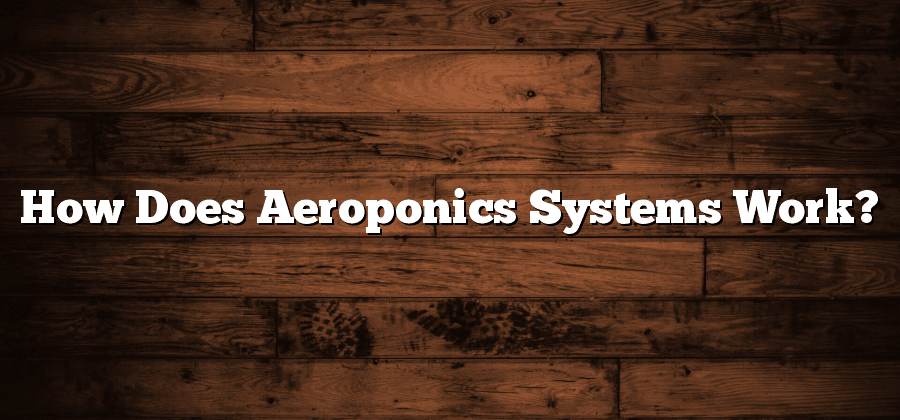Benefits of Aeroponics Systems
Aeroponics systems offer a multitude of benefits for growers, making them a popular choice in the world of modern agriculture. One of the major advantages of aeroponics is the efficient use of resources. By misting the roots with a nutrient-rich solution, aeroponics eliminates the need for soil, thereby reducing water usage by up to 90% compared to traditional farming methods. This not only helps conserve one of our most precious resources but also makes aeroponics an environmentally friendly option.
Another significant benefit of aeroponics systems is the accelerated plant growth they promote. With direct access to oxygen and nutrients, plants in an aeroponics setup can grow up to 50% faster than those in soil-based systems. This rapid growth rate allows for quicker harvests, making aeroponics particularly attractive for commercial growers looking to maximize their yield and profits. Additionally, the controlled environment in aeroponics systems reduces the risk of pests and diseases, leading to healthier plants with higher nutritional values.
Components of Aeroponics Systems
Aeroponics systems rely on various components to create an efficient and effective growing environment. One essential component is the aeroponic chamber, which is a closed space where the plant roots are suspended and exposed to a fine mist of nutrient-rich water. The chamber is often made of durable materials such as PVC or food-grade plastic to ensure longevity and hygienic conditions for the plants. Additionally, aeroponic systems require a high-pressure pump to generate the fine mist of nutrient solution. This pump plays a crucial role in distributing the liquid evenly throughout the chamber, ensuring that each plant receives an adequate amount of nutrients and oxygen for optimal growth.
The Role of Nutrient Solution in Aeroponics
Nutrient solution plays a crucial role in the success of aeroponic systems. Unlike traditional soil-based growing methods, aeroponics relies on a nutrient-rich mist to provide plants with the necessary elements for growth. The nutrient solution used in aeroponics is often a carefully balanced mixture of water and essential nutrients, including nitrogen, phosphorus, and potassium, as well as micronutrients such as calcium, magnesium, and iron. This specially formulated solution is delivered directly to the plant roots, resulting in faster growth rates, higher yields, and more nutritious crops.
The precise composition of the nutrient solution in aeroponics is tailored to the specific needs of different plants and growth stages. Adjusting the nutrient levels and ratios allows farmers and growers to optimize plant health and maximize performance. Furthermore, the nutrient solution in aeroponics is often recirculated, meaning that any excess solution not absorbed by the plants can be collected and reused. This efficient use of resources not only reduces waste but also minimizes the environmental impact of aeroponic systems. By providing plants with the perfect balance of nutrients they need, the nutrient solution is a vital component in ensuring the success and sustainability of aeroponic agriculture.
Key Features of Aeroponics Systems
Key Features of Aeroponics Systems
Aeroponics systems possess several key features that make them stand out from other growing methods. Firstly, aeroponics allows for maximum oxygenation of plant roots. In these systems, plant roots are suspended in the air without any growing medium. This allows for direct exposure to oxygen, promoting rapid growth and efficient nutrient absorption. Furthermore, aeroponics systems utilize a misting system to deliver nutrient solution directly to the roots. This precise delivery method ensures that the roots receive optimal amounts of nutrients, reducing waste and maximizing plant health.
Another important feature of aeroponics systems is their scalability. These systems can be designed to fit any space, from small indoor setups to large commercial installations. Whether you have limited indoor space or an expansive greenhouse, aeroponics can be tailored to meet your needs. This flexibility makes it an ideal choice for urban farming or any location where space is a premium. Additionally, aeroponics systems are highly efficient in their water usage. With traditional soil-based farming, a significant amount of water is lost through evaporation and runoff. In contrast, aeroponics systems recirculate the nutrient solution, reducing water waste and ensuring that the plants have access to all the water they need. This can be a crucial advantage in regions prone to drought or limited water resources.
Aeroponics vs. Hydroponics: A Comparison
Aeroponics and hydroponics both offer innovative methods for growing plants without the use of soil. While they share similarities, these systems also have distinct differences. Understanding these variances is crucial for those considering which method to implement in their cultivation practices.
In aeroponics, plants are suspended in air and receive nutrient-rich mist through periodic spraying. The roots hang freely in a chamber or container, allowing for maximum oxygen exposure. This high-oxygen environment promotes faster growth rates and efficient nutrient absorption. Hydroponics, on the other hand, involves growing plants in a nutrient solution directly, without the use of soil. The plant roots are submerged or partially submerged, ensuring constant access to the necessary nutrients. Despite the absence of soil, hydroponics provides ample support for plant growth.






